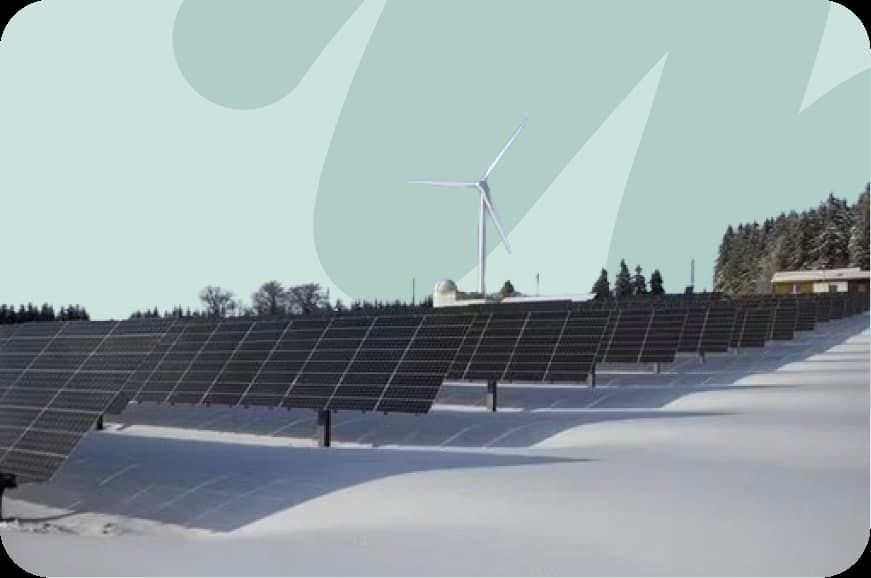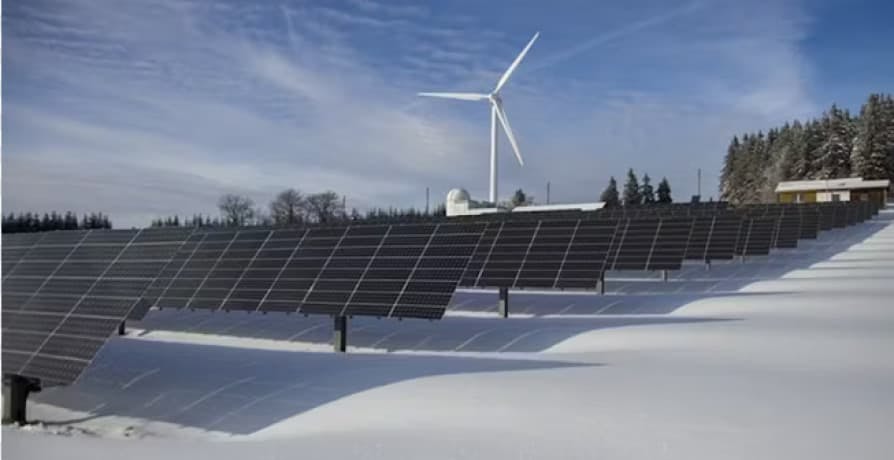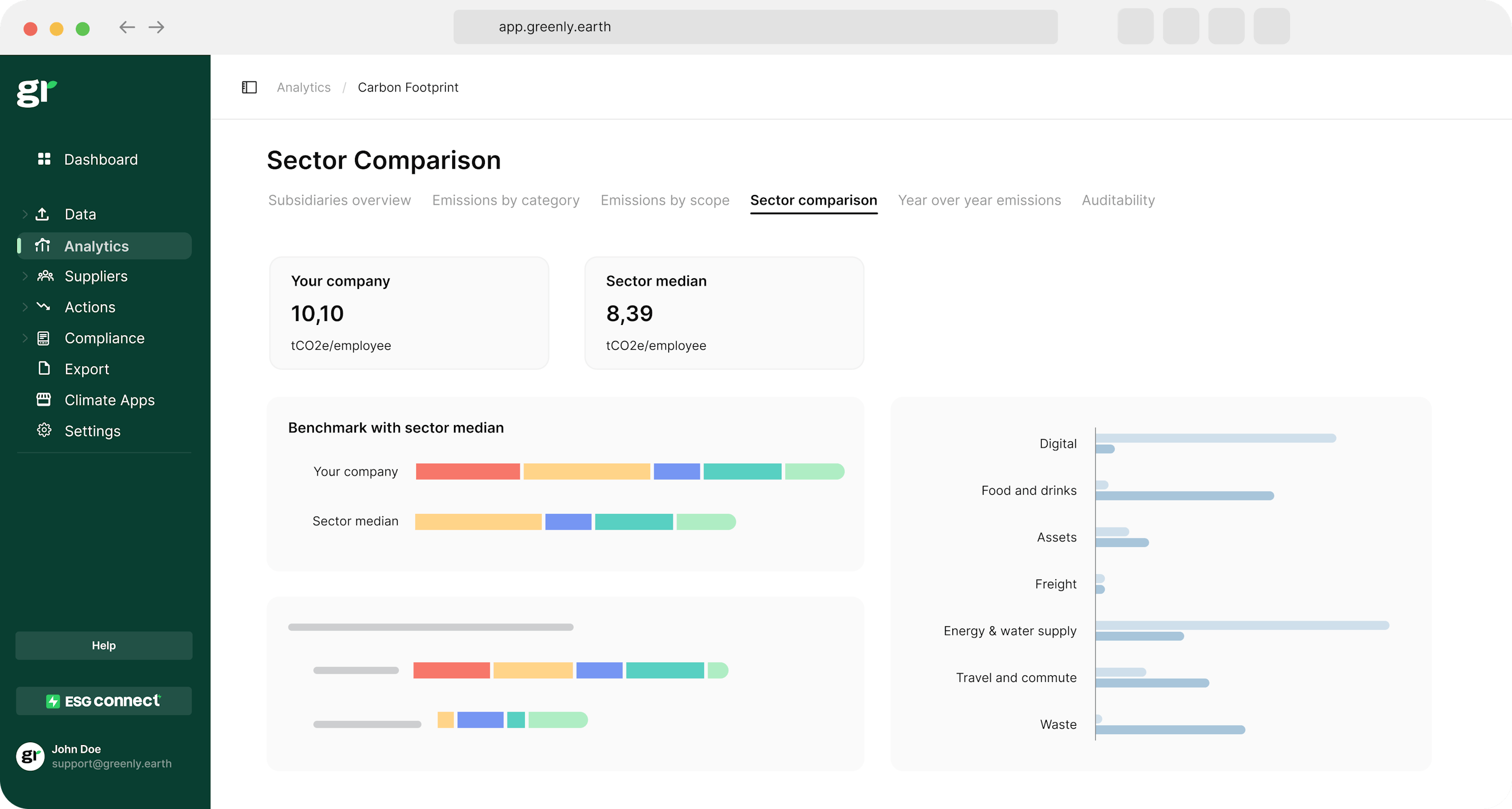
What are the 3 Pillars of Corporate Sustainability?
In this article, we'll explore what the 3 pillars of corporate responsibility are, why they're important, and how businesses can turn them into practical action.
ESG / CSR
Industries



In a world that is constantly seeking new ways to become more sustainable as an effort to mitigate climate change, a term that is often thrown around is renewable energy.
Renewable energy production and renewable energy technologies are becoming increasingly important to generate electricity in a sustainable way in the midst of climate change and recent reports from the International Renewable Energy Agency.
Renewable resources such as wind power and solar power can help us to implement renewable energy systems that aid in electricity generation and reduce our consumption of natural gas.
👉 In this article, we'll explain what renewable energy is and how renewable energy benefits the planet and help the fight against climate change to ultimately reduce rising global temperatures.

Renewable energy is energy that is derived from a natural source instead of a source that causes further environmental damage.
For instance, solar panels rely on energy from the sun and wind panels source their energy from the wind. The sun and wind are consistent, abundant resources that aren’t going anywhere and conspicuously, don’t pollute their environment as they are a part of nature.
Non-renewable energy resources do not possess this same plentiful trait. Non-renewable energy resources like fossil fuels, coal, oil, and gas require centuries to form and therefore, aren’t as abundant in nature as renewable energy is.
💡 Also, non-renewable energy sources are detrimental to the environment – as burning fossil fuels emits harmful greenhouse gasses and carbon dioxide emissions into the atmosphere which only worsen the current state of climate change.
Therefore, renewable energy helps to mitigate excess carbon and greenhouse gas emissions, and has the potential to dramatically reduce rising global temperatures and ultimately, the negative effects of climate change.
Renewable energy works by deriving energy from abundant sources of nature, like the sun, wind, and ocean. Renewable energy sources are delineated as “renewable” since they do not run out the way that fossil fuels, oils, and gasses do. Renewable energy is then used to power electricity, space heating, cooling systems, and even transportation.
💡 Renewable energy is sometimes called clean energy or reusable energy.
Here are a few other reasons why renewable sources and renewable electricity generation are important:
As renewable energy is copious in more ways than one, there are a plethora of opportunities to use renewable energy sources!
Solar energy is the most plentiful and common renewable energy resource, as the sun is always there – and the sun’s energy can even be extracted when it’s cloudy outside.
In fact, the sun provides the Earth with energy at a rate ten thousand times the rate of human energy consumption.
Solar energy is retrieved through solar panels that can convert sunlight into electrical energy. Technology powered by solar energy can help produce heat, cool air, electricity, and provide natural light.
While solar energy isn’t equally abundant in every region of the world, it’s still possible for each country to at least use a mix of solar energy and traditional, non-renewable energy resources.
Plus, solar panels aren’t as expensive as they used to be, anymore! Once installed, solar panels can last for up to thirty years. Therefore, solar energy isn’t only more adorable in the long run – but better for the environment, too.

Wind energy is another renewable energy resource that utilise the kinetic energy of air through the use of wind turbines methodically placed where wind is most prevalent and easily captured.
While wind energy has been used for years, it’s only recently that technologies have evolved to accommodate the electrical power necessary for newer equipment.
Wind energy might hold even more potential than solar energy does, as wind is abundant in nearly every region of the globe – whereas sunshine can be sparse in certain parts of the world, such as in Northern Europe.
Geothermal energy makes use of the thermal energy from the Earth’s core. The heat used for this type of renewable energy is extracted from reservoirs.
Geothermal energy has been sourced through reservoirs for over one hundred years!
💡 A popular example of geothermal energy usage is across the country of Iceland – known for the Blue Lagoon and heated sidewalks.
The reservoirs that often source permeable heart by nature are called hydrothermal reservoirs. The reservoirs that are hot enough, but don’t produce as much heat as hydrothermal reservoirs can, are still able to produce geothermal energy with the help of geothermal systems.
Another renewable energy source is Hydropower.
Hydropower seeks to use the energy from water in movement depending on its elevation, and like geothermal energy – can also be found in reservoirs.
However, it’s important to note that unlike wind or solar energy – hydropower can deplete water as a natural resource that can otherwise be used as drink water, maintain irrigation systems, or manage droughts. In other words, hydropower isn’t as abundant as wind or solar energy.
Ocean energy is retrieved from technologies that determine the thermal energy of seawater, waves, and currents – and this energy can be used to create electricity or heat.
Ocean energy is sometimes referred to as Marine energy.
While the methods and systems to obtain usable renewable energy from the ocean are still Ocean energy systems are still being finalised, ocean energy has a big potential to be one of the most used renewable energy resources in the world – as nearly three quarters of the world is made up of ocean water.
Since ocean water is so accessible and abundant, it could mean ocean energy could take off in the future and become a beloved renewable energy source.
A final example of renewable energy is bio energy.
Bio energy, or biomass energy, is made from various organic substances, otherwise known as biomass – like wood and charcoal which are often used for heat and power production, or agricultural crops that are used in conjunction with liquid bio fuels.
Biomass is predominantly used in rural regions for simple, daily activities like cooking, space heating, and providing light. Biomass is generally sparser in developing countries.
Despite the innovative nature of biomass and bio energy, it’s important to note that in order to extract energy from biomass, the biomass has to be burned – and burning that biomass emits greenhouse gasses into the atmosphere, which aren’t good for the environment.
However, burning biomass doesn’t emit as many greenhouse gasses as burning non-renewable energy sources like fossil fuels, coal, or oil do. Ultimately, this constitutes bio energy as a happy medium between the rest of the renewable energy sources listed above and non-renewable energy. In other words, bioenergy isn’t the best type of renewable energy – but it is still better than burning fossil fuels and emitting higher amounts of greenhouse gasses and further polluting the planet.

Nuclear energy isn't on the list of types of renewable energy seeing as the materials used in nuclear power plants aren't considered renewable and can produce radioactive waste.
However, nuclear energy in itself is clean and this energy mix can at times prove more eco-friendly than the energy generated from coal and other fossil fuels.
| Type of Renewable Energy | Pros | Cons |
|---|---|---|
| Wind Power Energy generated by converting wind currents into electricity using wind turbines. |
|
|
| Solar Power Energy harnessed from the sun using photovoltaic cells or solar thermal collectors. |
|
|
| Bioenergy Energy produced from organic materials (biomass) like plant and animal waste. |
|
|
| Ocean Energy Energy derived from the movement of water in the oceans – including tidal, wave, and ocean thermal energy. |
|
|
| Geothermal Energy Energy extracted from heat stored within the earth. |
|
|
| Hydropower Energy generated by the movement of water, typically from rivers or dams. |
|
|
Renewable energy may seem perfect on the surface, but the truth is – there are still a few downsides to using renewable energy.
It’s no secret that renewable energy is an incredible opportunity to improve the world’s environmental predicament. Besides the obvious beneficial impact of consistent abundance that renewable energy resources provide, renewable energy also tends to be cheaper in most countries around the world, and also directly help the job market and the economy simultaneously – as renewable energy helps to generate three times the amount of jobs than fossil fuels can.
👉 However, there are some disadvantages to using renewable energy – such as the unreliability of renewable energy sources and the initial start-up costs required.
First of all, renewable energy energy isn’t available every moment of every day. This is because renewable energy sources are contingent on weather conditions, and if the weather conditions are suitable for renewable energy extraction – then your renewable energy source can’t be replenished.
For instance, if it’s raining – then your solar panels can’t generate enough electricity as they would be able to on a sunny day.
The unreliable consistency of renewable energy is often considered to be the primary setback that discourages others to try using renewable energy sources.
Technologies that source renewable energy can also, at times, be deemed as inefficient. The technology to convert renewable energy into usable electricity isn’t fully developed yet, and therefore – can arguably not replenish the renewable energy as quickly as one might think, given renewable energy sources are seemingly, constantly in abundance in nature.
Many companies and individuals are weary to initially invest or install technologies to source renewable energy because the initial cost is high. Also, a lot of space is compulsory in order to properly establish a renewable energy site. Since there isn’t as much land readily available due to agricultural reasons and incessant deforestation, finding the space to implement the technology necessary to retrieve renewable energy from sources of nature is difficult.
Lastly, technologies that source renewable energy could produce unintended consequences – like pollution, which deters the original reason to use renewable energy in the first place. Therefore, it’s imperative that we think of new ways to reuse or recycle the devices used to harvest renewable energy, like solar panels, so that the initial benefits of using renewable energy don’t get overshadowed by this potential environmental flaw.
Is renewable energy more expensive or time consuming to find?
It’s not that renewable energy is a consecutive, high cost for companies to seek and maintain – it’s more so a factor of convenience.
💡 Why do companies opt for nonrenewable energy sources if renewable energy is so abundant and accessible?
Renewable energy can absolutely help to reduce climate change.
Climate change is aggravated by the increase of ozone depleting substances that are contributing to rising global temperatures. If we decrease the amount of these ozone depleting substances, like fossil fuels, oils, and greenhouse gasses – then global warming could begin to stabilise and over time, even steadily decrease.
👉 One of the biggest, if not the most appealing, benefits of using renewable energy is the fact that it can help reduce the amount of greenhouse gas emissions in the atmosphere and ultimately, help to reduce climate change.
Renewable energy isn’t the only way out of the climate change crisis, but it’s certainly a good measure that companies can take to reduce their carbon footprint and mitigate further climate change.

The easiest way to get started with renewable energy is to pick one of the more common renewable energy sources – like the sun or wind. Installing solar panels or wind turbines is a great, affordable, and efficient way to begin implementing renewable energy sources into your business or daily life.
Renewable energy has the opportunity to help us out of the climate change crisis. It’s time we overlook the slight inconvenience of renewable energy, and embrace the capability renewable energy sources have to change the course of global warming.
If reading this article about renewable energy resources has made you interested in reducing your carbon emissions to further fight against climate change – Greenly can help you!
Greenly can help you make an environmental change for the better, starting with a carbon footprint assessment to know how much carbon emissions your company produces.
Click here to learn more about Greenly and how we can help you reduce your carbon footprint.
